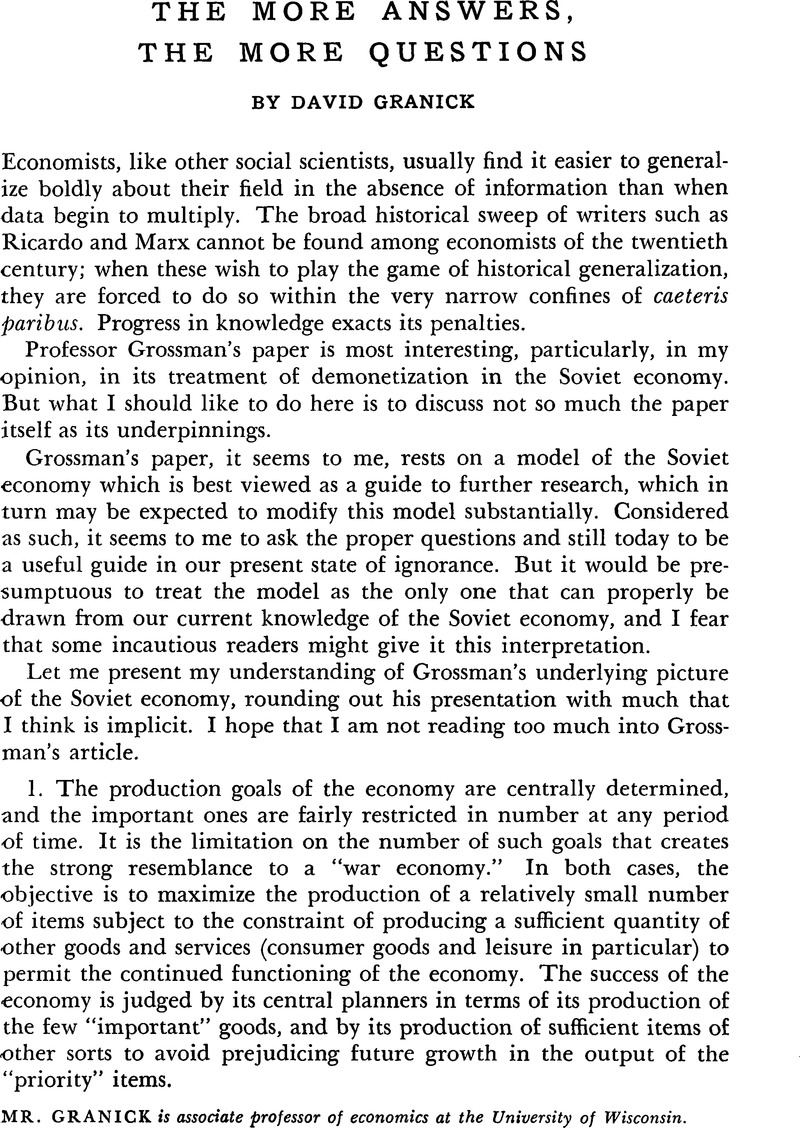No CrossRef data available.
Article contents
The More Answers, The More Questions
Published online by Cambridge University Press: 27 January 2017
Abstract

Information
- Type
- Discussion
- Information
- Copyright
- Copyright © Association for Slavic, East European, and Eurasian Studies. 1962
References
1 Such an implication is in contradiction to Grossman's view of Soviet conservatism. But it is a radicalism of five to ten years ago rather than of the present.
2 Bergson, Abram, The Real National Income of Soviet Russia Since 1928 (Cambridge, Mass.: Harvard University Press, 1961), pp. 118–20Google Scholar. Throughout this paper I lean on Bergson's results. It should be pointed out that other investigators, Dr. Naum Jasny in particular, come to different conclusions. Bergson's book was probably not available in its final form when Grossman wrote his article.
3 Ibid., pp. 256–57.
4 Ibid., pp. 255–57.
5 Ibid., p. 120.
6 Ibid., Table 76, p. 277.
7 Ibid., pp. 7–8, 252–55.
8 Admittedly, a treatment of the Purges as “accidental” is an extreme view. Bergson computes total 1949 consumption as roughly equal to the 1937 level. Ibid., pp. 165 and 304.
9 Ibid., p. 252.
10 Cf. ibid., p. 284, for respective rates of growth.
11 Jasny, Naum, “On the Wrong Track,” Soviet Studies, VIII, No. 1 (July, 1956), 50 CrossRefGoogle Scholar. Jasny made this statement as part of his complete denial that the 1937 data supported conclusions in any way resembling those of Bergson.
12 Bergson, op. cit., p. 271.
13 Cf. the classic account of prewar decentralization within General Motors in Drucker, Peter, The Concept of the Corporation (New York: John Day Co., 1946)Google Scholar. Drucker reports that the decentralized divisions seemed to produce the best managers but that the centralized divisions were the most profitable.

